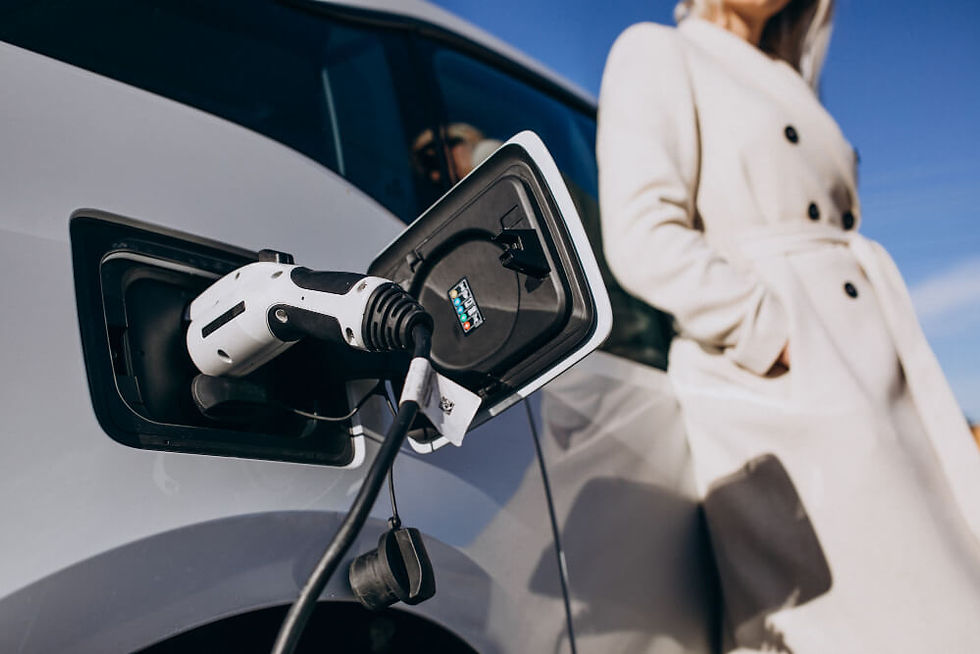V2G, V2H, V2X: The Evolution of Bidirectional EV Technology
- Social Media
- Apr 28
- 3 min read
Imagine if your car could do more than just drive you around.

What if it could power your home during an outage? Help stabilize the local grid? Maybe even send energy back to your community?
Welcome to the world of bidirectional EV technology — where your electric vehicle becomes a true energy partner, not just a mode of transport.
As EVs become a bigger part of our daily lives, more people are looking beyond just how to install EV charging station setups at home. They're exploring how their EVs can fit into the bigger energy picture. That’s where V2G, V2H, and V2X come into play.
Let’s break it down.
What Is Bidirectional EV Charging?
In simple terms, bidirectional charging lets energy flow both to and from your EV.
With a traditional charger, electricity only flows one way: from the grid to your car.
But with bidirectional charging, your EV can also send power back — whether it's to your home, the grid, or even other devices.
If you're planning to install EV charging station equipment soon, it's smart to think about future-proofing it for bidirectional capabilities.
Understanding V2G, V2H, and V2X
Each term sounds fancy, but they’re pretty easy to get once you break them down:
1. V2G – Vehicle-to-Grid
V2G stands for Vehicle-to-Grid.
It allows your EV to send stored electricity back to the grid when needed.
This can help balance energy demand, especially during peak hours.
When you install EV charging station equipment that supports V2G, you’re setting yourself up to potentially become a part of the energy ecosystem — where your car isn’t just a vehicle but a mini power contributor.
2. V2H – Vehicle-to-Home
V2H, or Vehicle-to-Home, is exactly what it sounds like.
Your EV acts like a giant battery for your house.
Say there's a blackout — instead of sitting in the dark, you could pull energy directly from your car.
Many homeowners now choose to install EV charging station systems that can handle V2H, seeing it as a new layer of energy security.
3. V2X – Vehicle-to-Everything
V2X takes it a step further: Vehicle-to-Everything.
Not just your home or the grid — your EV could power devices, buildings, or even other vehicles.
It opens up endless possibilities.
As more people decide to install EV charging station setups, V2X-compatible technology is becoming a major buzzword in the EV world.
Why Bidirectional Charging Matters
Bidirectional technology could offer benefits beyond simply keeping your EV charged.
It could help make renewable energy more reliable. It could mean fewer blackouts. It could even lead to a more flexible and resilient energy system.
When you install EV charging station solutions that support bidirectional use, you're stepping into this future.
You're not just charging a car — you're joining a movement toward smarter, more connected living.
And the best part? As the technology grows, more options will be available to upgrade or retrofit the system you choose today.
That's why many EV owners are being mindful about what they pick when they install EV charging station setups for their homes or businesses.
In short, bidirectional charging isn’t just about powering up — it’s about giving power back.
As more people rethink how they install EV charging station setups, the world of V2G, V2H, and V2X will only get bigger and more exciting.
FAQs
1. Can any EV support bidirectional charging?
Not all EVs have the hardware for bidirectional charging. It’s important to check if your vehicle and charger both support it before you install EV charging station systems for this purpose.
2. Does bidirectional charging damage my car’s battery?
Battery health depends on many factors like how often and how deeply it's charged and discharged. Using a properly designed system when you install EV charging station can help manage and monitor battery use carefully.
3. Is special equipment needed for V2G, V2H, or V2X?
Yes, bidirectional charging requires specific hardware and software. Make sure to choose the right options when you install EV charging station equipment to support these advanced features.







Comments